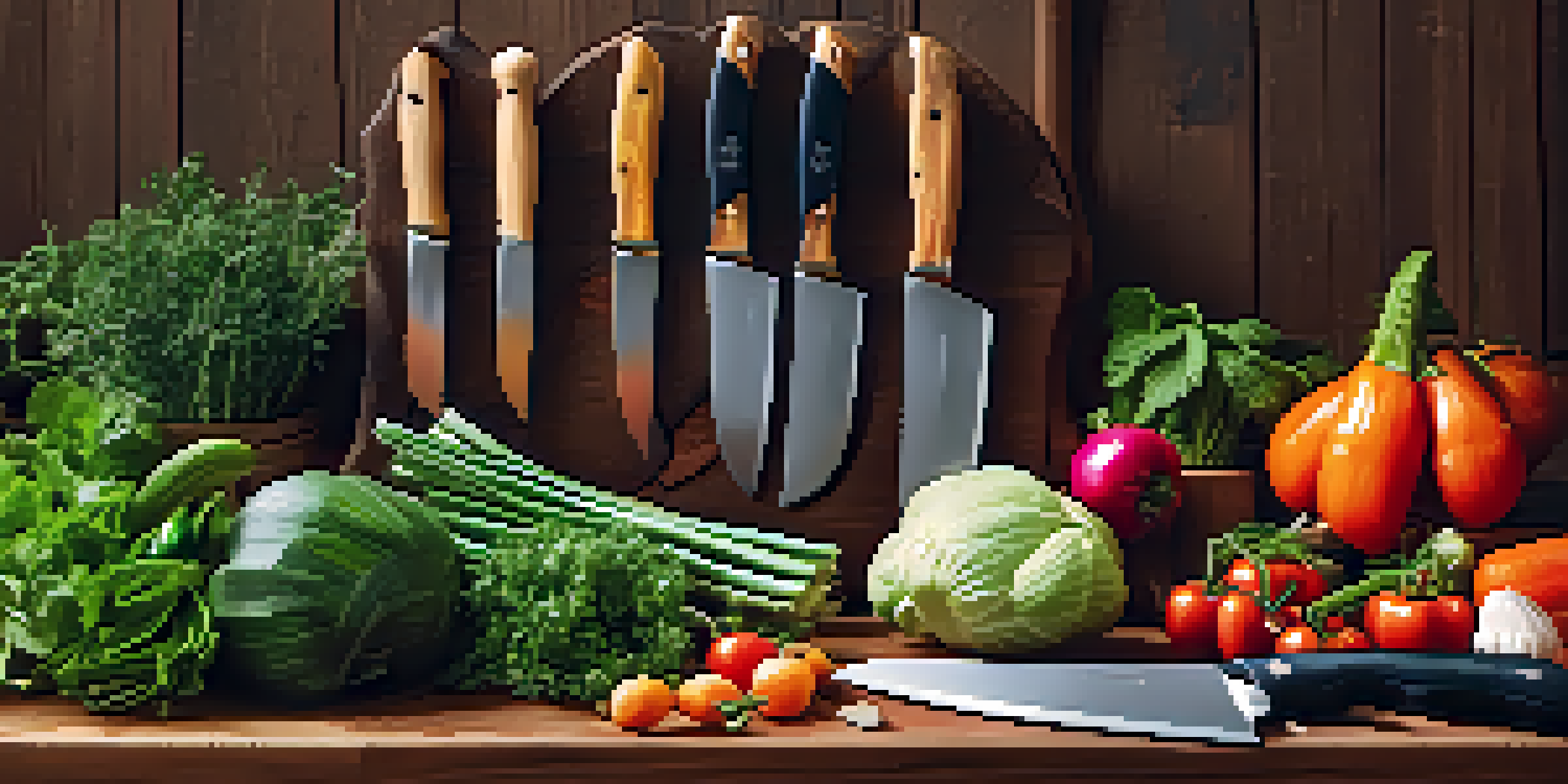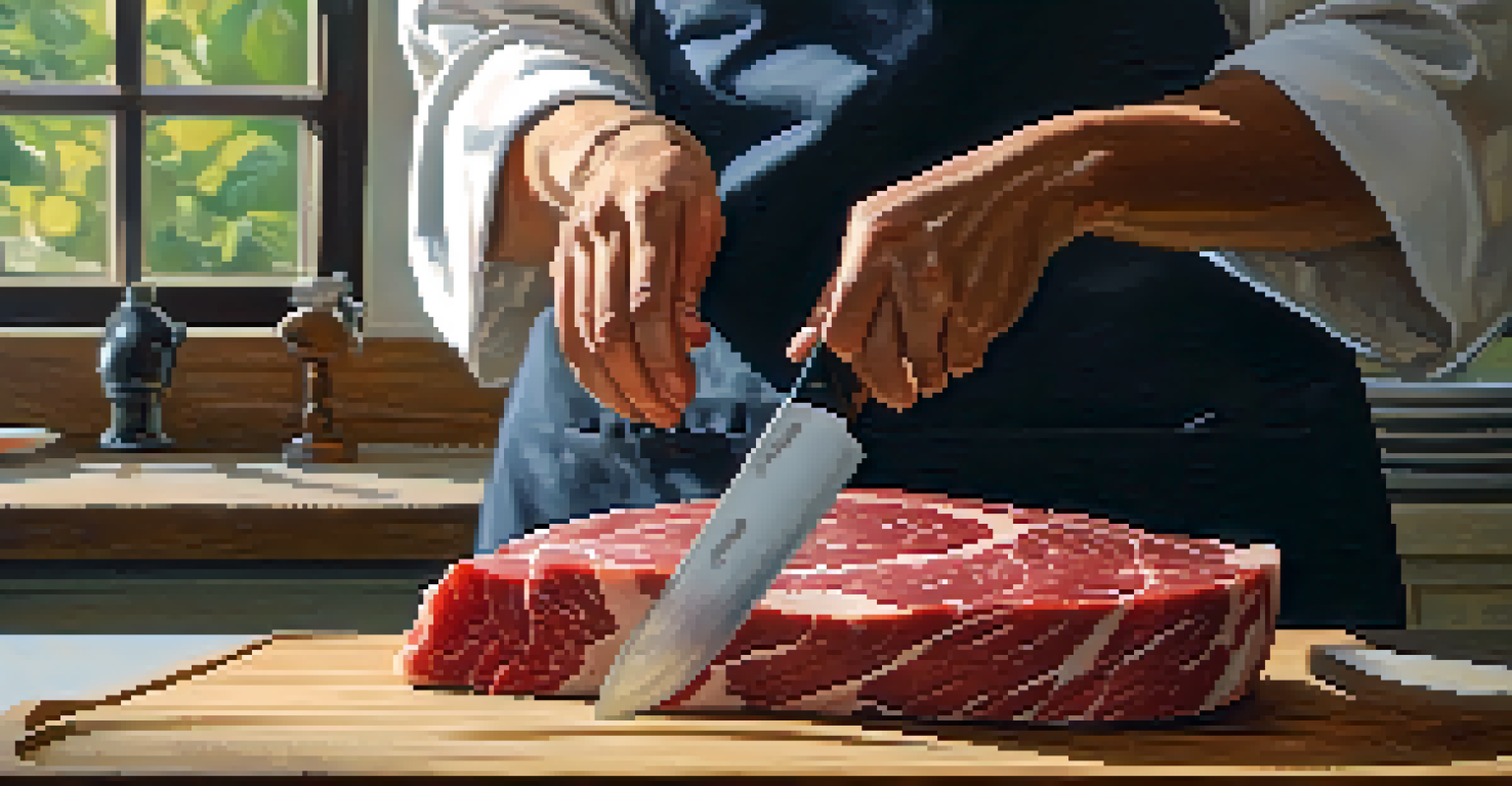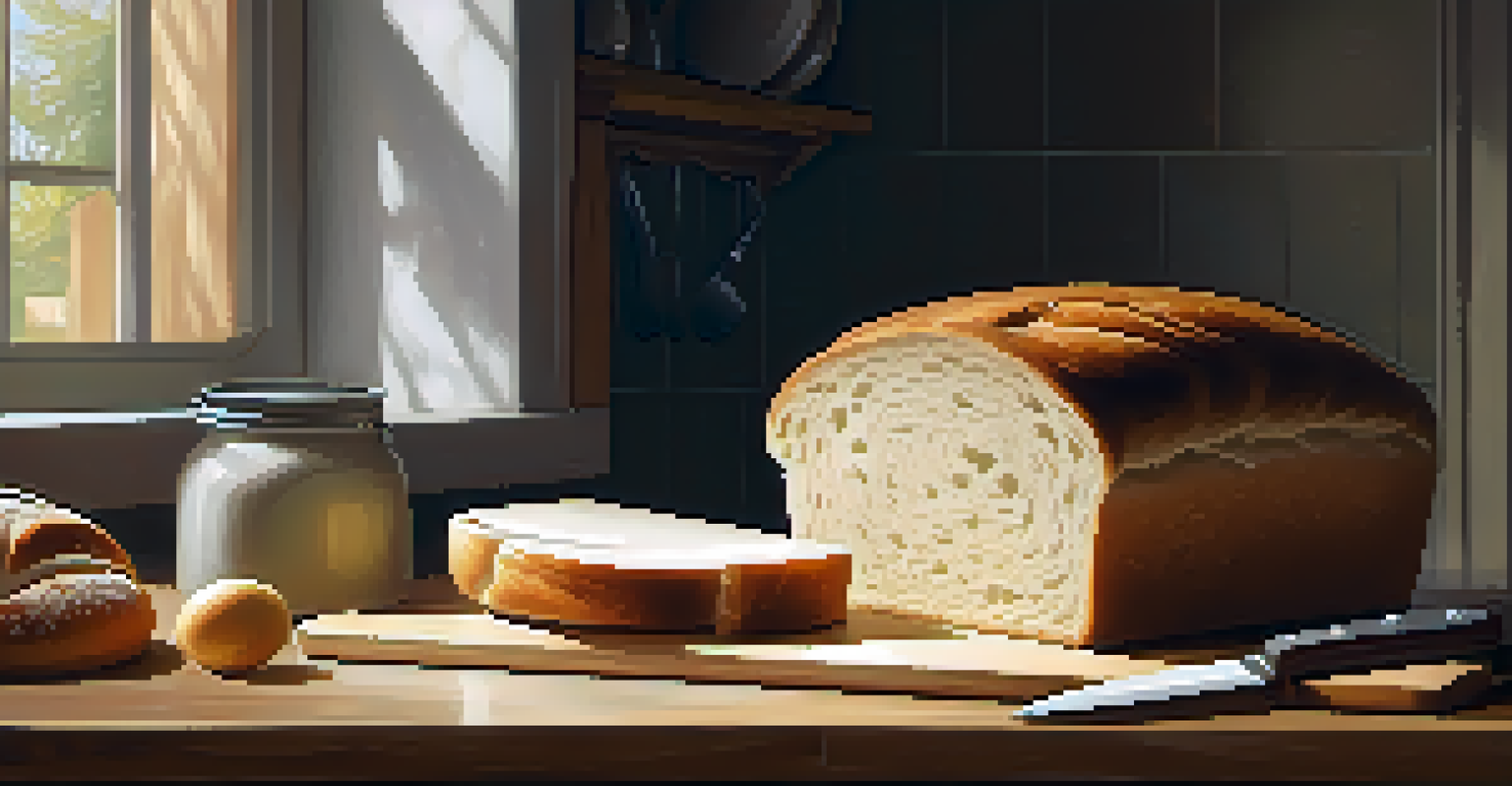Safe Handling of Carving Knives: Techniques to Follow

Understanding the Importance of Knife Safety
Carving knives are essential tools in the kitchen, but they can be dangerous if not handled properly. Understanding the importance of knife safety helps prevent accidents that can lead to serious injuries. It's not just about being careful, but about adopting specific techniques that make carving safer for everyone involved.
Safety isn't just about what you do; it's about how you think.
When you think about it, a carving knife is like a powerful vehicle; it's incredibly useful but requires respect and knowledge to operate safely. Just as a driver learns the rules of the road, anyone using a carving knife should be aware of safety guidelines. This foundational understanding is the first step toward safe carving practices.
By prioritizing knife safety, you not only protect yourself but also create a safer environment for those around you. Whether you're a seasoned chef or a home cook, being mindful of safe handling techniques ensures a more enjoyable cooking experience.
Choosing the Right Carving Knife for the Task
Selecting the right carving knife is crucial for both safety and effectiveness. Different tasks require different types of knives, so understanding their specific purposes can make a big difference. For instance, a long, serrated knife is ideal for slicing through meats, while a shorter, straight knife is better suited for delicate tasks.

Using the appropriate knife not only enhances your efficiency but also reduces the risk of accidents. A knife that's too large or too small for a task can lead to awkward movements, increasing the likelihood of slips and cuts. Thus, always assess the job at hand before reaching for a knife.
Knife Safety is Essential
Understanding and prioritizing knife safety helps prevent accidents and ensures a safer cooking experience.
Investing in quality carving knives tailored to your kitchen needs is key. A well-chosen knife feels comfortable in your hand and allows for better control, making it easier to carve safely and effectively.
Grip Techniques for Optimal Control
How you hold a carving knife can significantly affect your control and safety. A proper grip not only improves precision but also minimizes the chance of accidents. The most common grip involves pinching the blade with your thumb and index finger while wrapping the remaining fingers around the handle.
The knife is a tool, but like any tool, it can be dangerous if not handled with care.
This grip allows for better balance and control, enabling you to navigate through your carving tasks smoothly. It’s like holding a paintbrush; the way you grasp it can change the outcome of your artwork. Practicing this grip can make a world of difference in how confidently you handle the knife.
Remember to keep your hands dry and clean while gripping the knife, as moisture can lead to accidental slips. Practicing this grip technique regularly will enhance your carving skills and ensure a safer experience.
Maintaining a Stable Cutting Surface
A stable cutting surface is essential for safe knife handling. Always ensure that your cutting board is sturdy and secure before starting any carving task. A board that moves or slips can lead to mishaps, turning a simple carving session into a dangerous situation.
For added stability, consider using a damp cloth or a non-slip mat underneath your cutting board. This simple trick keeps everything in place, allowing you to focus on your carving without distraction. Think of it as laying a solid foundation before building a house; without it, everything is at risk.
Choose the Right Knife
Selecting the appropriate carving knife for specific tasks enhances efficiency and reduces the risk of injuries.
Additionally, make sure your cutting board is large enough for the task. A cramped space can lead to awkward angles and increased chances of accidents, so prioritize a workspace that offers room for movement.
Keeping Your Carving Knives Sharp
A sharp knife is a safe knife. It may sound counterintuitive, but dull knives are actually more dangerous because they require more force to cut through food. This extra pressure can lead to slips and accidents, making sharpness a crucial aspect of knife safety.
Regularly honing your carving knives not only improves their performance but also enhances your control. Just like a well-maintained car drives better, a sharp knife glides through food effortlessly, making your carving tasks smoother and safer. Plus, it’s less tiring on your hands!
Take the time to learn how to properly sharpen your knives or consider professional sharpening services. The investment in a sharp knife pays off in safety, efficiency, and the quality of your culinary creations.
Practicing Safe Cutting Techniques
Using safe cutting techniques is at the heart of carving knife safety. Always cut away from your body and keep your fingers clear of the blade's path. This practice minimizes the risk of injury and helps you maintain control over the knife.
Additionally, consider using a claw grip for your non-dominant hand while holding the food item. This technique involves tucking your fingertips under and using your knuckles as a guide for the knife, drastically reducing the chances of accidental cuts. Picture it as a protective barrier between your fingers and the blade.
Practice Safe Cutting Techniques
Utilizing safe cutting techniques, such as cutting away from your body and using a claw grip, significantly minimizes the chance of accidents.
Regularly practicing these techniques can build muscle memory, making safe cutting second nature. The more you practice, the more confident you'll feel in your carving abilities, leading to a safer kitchen environment.
Storing Carving Knives Safely
Proper storage of carving knives is just as important as how you handle them. Storing knives incorrectly can lead to dull blades and accidents, which is why investing in a knife block or magnetic strip is a smart choice. These storage solutions keep your knives organized and readily accessible while protecting the blades.
Avoid storing knives loosely in a drawer, where they can bump against each other and become damaged. It's like tossing your favorite clothes into a jumbled pile; they can get wrinkled and damaged. A dedicated storage solution keeps your tools in top shape.

Remember to always store knives with the blades facing down or covered to prevent accidental cuts when reaching for them. By adopting safe storage practices, you can prolong the life of your knives and maintain a safe kitchen environment.